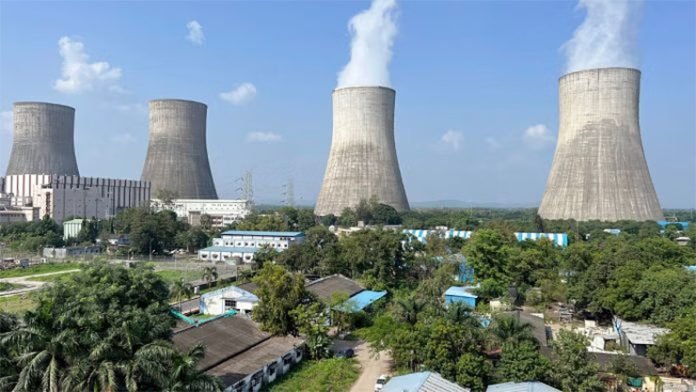New Delhi: India is embarking on a significant transformation in its nuclear energy strategy, focusing on the development and deployment of Small Modular Reactors (SMRs) as a key component of its clean energy ambitions.
Backed by an allocation of ₹20,000 crore, the government aims to have five SMRs operational by 2033, advancing toward the national target of 100 GW of nuclear power capacity by 2047.
This initiative is a response to both the urgency of decarbonising the energy sector and the practical challenges of expanding conventional nuclear infrastructure.
SMRs are defined globally as reactors with a capacity below 300 MW, though India is developing a range of designs: 220 MW Bharat Small Reactors (BSR), 50 MW Bharat Small Modular Reactors (BSMR), and 5 MWt (about 2 MWe) gas-cooled micro modular reactors (GCMMR), among others.
The government’s plan includes R&D investments in fuel cycle technologies and the commissioning of demonstration plants, particularly a 200 MW loop-type BSMR and a 5 MW gas-cooled reactor for hydrogen generation.
The Department of Atomic Energy has outlined a three-pronged approach for SMR deployment.These include repurposing ageing thermal power plants to extend their utility with clean, modular nuclear units.
Providing captive power solutions for energy-intensive industries like steel and aluminium, using reactors in the 200 MW class.
Installing smaller units (around 50 MW) in remote or challenging locations where large plants are impractical.
BSMRs and SMRs will primarily use pressurised water reactor technology, leveraging India’s existing expertise, while gas-cooled reactor designs are under development. The committee overseeing the initiative has recommended prioritising funding for BSMR and GCMMR demonstration projects before scaling up to commercial deployment.
A notable shift in policy is the decision to involve the private sector in both the development and operation of these reactors, breaking from the previous government monopoly under the Atomic Energy Act of 1962.
This is expected to accelerate deployment and open new financing avenues. SMRs offer several advantages over traditional large reactors: they are more flexible in siting, can be deployed faster, are potentially more cost-effective, and are well-suited for modular, factory-based manufacturing.
International collaboration is also part of the strategy, with India looking to adopt global best practices in reactor design and safety, and to learn from major players like Russia’s ROSATOM. While SMRs are projected to contribute about 41 GW of the targeted 100 GW nuclear capacity by 2047, the remainder will come from existing and under-construction large reactors.
Recognising the ambitious nature of these targets, the government and its advisors have recommended a phased approach, with clear milestones for 2030 (short-term), 2040 (medium-term), and 2047 (long-term). SMRs are not intended to replace large nuclear plants as baseload providers but will complement them, especially in industrial decarbonisation and the repurposing of retiring coal plants.
India’s SMR program is a bold step toward energy diversification, industrial decarbonisation, and the achievement of net-zero emissions. The initiative’s success will depend on technological readiness, regulatory harmonisation, public acceptance, and the effective integration of private sector capabilities.






